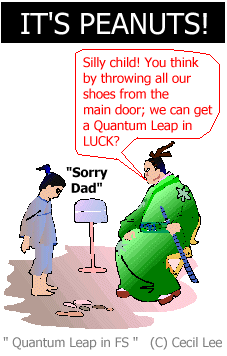-
Posts
38678 -
Joined
-
Last visited
-
Days Won
149
Content Type
Profiles
Forums
Blogs
Events
Gallery
Store
Articles
Everything posted by Cecil Lee
-
Dear Jen, 1. The Year of Horse (2002) is fast disappearing. 2. For the Chinese, we will be celebrating the New Chinese Lunar New Year on 1 February 2003. 3. For Year of Horse 2002, Grand Duke is sitting at 180 degrees facing North 0 degrees. 3.1 Exactly opposite the Grand Duke is known as the 3 killings location. 3.2 For the Grand Duke at 180 degrees, must avoid disturbing or touching him. 3.3 For the 3 killings location, simply avoid any renovations at this sector for Year of Horse 2003 (only). 4. For Year of the Water Goat, 2003, Grand Duke will be moving towards SSW 210 degrees. And the 3 killings is at 30 degrees. (Apologies Please ignore any of my recent postings as I mistakenly stated that Grand Duke will be at 220 degrees - 10 degrees error). Actually, the location of Grand Duke for 2003 can be found under this link:- http://sg.geomancy.net/resources/yearly-forecast/forecast-2003.htm Warmest Regards, Cecil
-
Dear All, There was a massive overload of the global internet systems on 25 Jan 2003 causing network congestion across major US internet gateway carrier routes causing connection problems to our various International/US websites. If you are from Asia/Australiasia, you will have problems connecting to us during your day-light hours on 25 Jan 2003 to our US global servers. If you had tried to send us an e-mail, between 12:30 a.m. EST (GMT +1200HRS) on January, 25, 2003 to 22:00p.m. EST on January, 25, 2003; please re-send your e-mail as we might not have received it. News on this can be found at Yahoo! News or at US funded CERT.ORG We sincerely apologise for the inconvienced caused. Warmest Regards, Cecil Lee
-
Dear Veronica, 1. Frankly, it is best to keep the toilet door closed when not in use. And keep the toilet clean and airy. 2. To `side-track'; for the toilet, from a Feng Shui point of view; toilet qi should be `flushed' away or dissipated as soon as possible. 3. And ideally, at least one side of the wall should share an external wall. If the toilet has ventilation glass at this side (external wall) it is best to open them. 4. For your son's bedroom, make sure that the windows are opened and the room is well ventilated. But if he usually sleeps in an aircon environment, closing the windows is ok. 5. This not necessary but, personally I use three sets of Honeywell and 1 Amcor (with ioniser) air-cleaners and turn it on daily. But the filters should be changed on schedule. 6. Rather than relying on Feng Shui, especially if the doors and windows are not opened all the time, such devices helps improve the air quality around the home. Warmest Regards, Cecil
-
Dear Lisa, 1. Yes, it is very common to find such a situation in high rise office buildings. 2. Do you have a back (side) cabinet. If you do have a row of cabinet behind your desk; this would be advantages. 3. As this is symbolic of a mountain behind you. On top of this back cabinet, you can also place e.g. a simple paper weight e.g. made of brass or even a crystal. 4. If the back also has blinds, it is best to draw it closed also. Note: The only caution is if a specific set of windows has been earmarked with a red triangle; which is meant for fireman's access, then, one cannot place any of the above at the location. Warmest Regards, Cecil
-
Dear Jen, 1. The worst location to touch or disturb from 1 February 2003 (1st day of Lunar New Year) is South at 220 degrees. 2. This direction is where the Grand Duke of Jupiter is suppose to be sitting. And it is very inauspicious to disturb or touch him. It may bring several years of bad luck. 3. The 3-Killings location The 3 killings location is directly opposite the grand duke location. Therefore if Grand Duke is sitting at 220 degrees, than this coming Goat year 2003, the 3-killings is located at 40 degrees. Please see below:- Note: True magnetic compass direction at 40 degrees. Here, do not do any renovations. No. Traditional Feng Shui Compass School uses true magnetic compass (direction). Not any symbolic `North' direction. For example, if this location is not 40 degrees North-North East, then there is no issue here. As mentioned, please use any ordinary compass with a magnetic needle. From the centrepoint of the house, if this direction is not NNE 40 degrees, than there should not be a problem or issue unless; the Flying Star chart has signification bad earth elements such as #5 or #2 or a combination of both or multiple (triple) of these. If there are many #2 or #5, then, when doing digger, it is preferred to place some metal between the two. A simple analogy is e.g. if there is a garage, a car between the digging is acceptable. Warmest Regards, Cecil
-
Dear Vu, 1. Based on our experience, it one is assessing only your apartment unit, than from the centrepoint of the house, locate where is the main door. 2. If the apartment is only one level or storey; then determine the centrepoint and from here find out where is the direction of the main door. 3. If the apartment has two or more levels, determine where is the main entrance to this apartment. From the centrepoint, find the direction of the main door. 4. If one is trying to do a Feng Shui audit for the entire block, then, this is different from Para 2. and 3. Warmest Regards, Cecil
-
Dear Jen, When dealing with such questions, it is preferred that you provide a sketch. It need not be to scale but at least, should show this area in relation to the roughly the distance from the main door, whether the wall covers the entire main door or covers partially with a void. I feel that it would not be right to answer this question without a proper perspective. Warmest Regards, Cecil
-
Dear Jen, If you have a sketch, please upload to this forum so that I can guide u on how to determine the centrepoint. Usualy the garage should not be taken into consideration. But I can understand that it may be quite difficult for you to `cut-it' off. Do draw a sketch. For resources on finding the door direction, please go to this link: http://www.geomancy.net/resources/art/art-cecilcompass.htm Warmest Regards, Cecil
-
Dear Anon, 1. Are you staying in a landed property or in an apartment. 2. If it is an apartment, is your view e.g. at the balcony blocked? Perhaps, if you are staying in an apartment, please describe more of the frontage (view) of the apartment. 3. We simply should not be placing a water position just because some of the Flying Stars says it can support water. 4. It is best to check the location to see if (reasonably) under Shapes and Forms, water can or cannot be placed at that specific sector. 5. NOTE: If one is living in an apartment, the higher one is, water is no longer a major issue since, we often will have already enjoy clear space. 6. Overall, it is best to take on this advice: "All of us must not become too obsessed with Flying Star Feng Shui ALONE". This is one of the most common mistakes or key failure. 7. We must not only EAT and SLEEP on Flying Star Feng Shui. 8. It is best that for those who simply use this, to expand your horizon and try to take on a well balanced approach by trying to understand and apply a combination of Shapes and Forms and Flying Star Feng Shui. 9. The next important point is that: Shapes and Forms (Feng Shui) can in many cases over-ride Flying Star Feng Shui. Warmest Regards, Cecil
-
Dear C Vu, Before, I reply, hope you can throw light into your present situation by taking a simple multiple question test:- Q1. Currently are you facing any `distress'? [ ] Yes or [ ] No Q2. If YES, please mark an `X' in the box:- I am currently facing: a. [ ] Financial distress b. [ ] Health distress c. [ ] Marriage problems d. [ ] Both financial and health distress e. [ ] Yes, all of the above. Warmest Regards, Cecil
-
Dear Anon, Please see below:- It would be ideal if bougainvillaes are not planted especially if it has lots of thorns sticking out. For me, I do have a pot of bougainvilla but, I specially chosen one with genetically smaller thorns. So far, there is no, concrete evidence to say whether plants with thorns are bad. All we ever hear is that this are bad. But, as I had mentioned, there is no concrete evidence to say for sure whether it is auspicious or inauspicious. But from my opinion, for bougainvilla plants, there should not be a major issue since: 1. it is even worse if this plant or tree has a solid trunk (that slices into the window area or planter box). 2. Bougainvillas need constant trimming especially if there is bright sunlight. It will grow `wildly' if not maintained. And from a planter box, this must be done regulary. 3. Bougainvillas love bright sun-light and little maintenance. if there is bright sun-light, it will constantly flower. For me, I specifically chose one that can flower different colours on one pot. I love the different colours: Light purple, purple, chilli red, maroon red, orange, white. They are very lovely to look at:) And perhaps, help improve Man (human luck). Since it is pleasing to the eye. Maybe, you may not truly appreciate it. If it is growing well, try not to shift it to another location. Best to keep them in a well ventilated location since, there is usually some chemical reaction and sometimes, gases such as menthol can be produced. Yes, if you can buy fishing line, it is best to restring it into a 6 rod wind chime. Depending on the Flying Star, this year may not be so bad for some East sectors if there are no double five's. Some sectors at East may not have even a single #5. So long as your sector has one #5, it is still best to restring and use the constant sound of metal to reduce bad earth elements. No harm to do so. Warmest Regards, Cecil
-
Dear C VU, 1. Yes, in terms of enhancements, we often look at e.g. #mountain and #water stars 2. For example if the frontage or facing position has #7 mountain with #7 water; then since there are metal elements, "water" can be added. 3. But it is equally wrong if we ignore the base #. In addition, we also need to look at the 81 combinations of #mountain and #water stars. 4. As a recap:- 4.1 look at #mountain and #water in relation to the specific location. For example, if the back of the house or mountain side has #7 with #7, then, we must study closely whether we can activate it properly (or not). 4.2 We also need to look at #mountain vs #water vs #base number or the palace numbers. 4.3 You must be skilled in understanding both the productive and destructive cycle. You have to fully understand the above two concepts before u can look at not only water vs wood but also water vs wood vs ? the third element. It is no point just looking at the two variables alone. All three variables must be looked at. 4.5 You should also use the 81 combinations for interpretation of the two flying stars #mountain vs #water. As mentioned, your key success factor is to try and work out all the various combinations (good and bad) of the five elements - productive/destructive sequence to achieve a proper balance. Warmest Regards, Cecil
-
Dear Anon, Yes, this is exactly the point. If you live in my country, there is no way one can change the name unless there is really a good reason that can convince my country. We all have to be practical when it comes to such things. Yes, as mentioned clearly in my earlier mail and for this report, we also clearly state so. We are all adults and it would be silly to kid ourselves of the facts. Warmest Regards, Cecil
-
-
Dear Users, A practical commonsense approach to better qi flow is space clearing. Believe it or not; it is still good to do space clearing. For the Chinese, many already had started to clean their house as well as throwing away or putting aside unwanted stuffs...prior to the start of the New Lunar Year which is on 1 February 2003.
-
Dear Kim Lee, 1. Frankly, I am not in the position to comment on the type of Feng Shui advice that was given to you previously. 2. Usually, when we make an accessment, the breadwinner and spouse Ba Zi is looked at: 2.1 For example: What is the husband's Ba Zi element and strength? e.g. husband = weak wood. 2.2 What is the wife's Ba Zi element and strength? Strong metal. 3. In such a situation, the binding element for both partners is water. 4. In the above example since the husband is a weak wood, too much earth element is harmful to him. (Although Earth element is suppose to be his `wealth' element. Note: wealth element is auspicious only if one is a strong wood person, otherwise, it will bring the person lots of problems. 5. At the same time, if the spouse (wife) is a strong metal element, then Earth element is not favourable to her. 6. Since you had already consulted someone about it, it is in your interest to check back the with same party on this matter. 7. In general, usually, it is not advisable to let the figurines face the main door. Warmest Regards, Cecil
-
Dear Users, 1. This year, we received personal faxes from at least 13 users of this forum. 2. For those who were located in Singapore, I had personally called up the user to ask if they had financial problems. So far, all either by sheer coincidence had some of these problems:- 1. Toilet at the centre-point or they had been advised to place a fish tank at the centre point. 2. Several respondent's ba zi is either weak fire element or strong water persons. 3. In many instances, the main door is at their death or disaster sector. All the above users had financial problems. Five were unemployed. Warmest Regards, Cecil
-
Dear Users, This has to do with BELIEFs than Feng Shui: 1. Attached illustration showing that it is inauspicious to use a divider to keep shoes (facing the main entrance door). 2. It is very inauspicious to give a friend a pair of shoes. Warmest Regards, Cecil P.S. Pictures not available for those listening in under the mailing list option.
-
Dear Anon, 1. Usually if the area of the protrusion is greater than 33.3 per cent of a sector, this is considered as a protrusion. Note: it is best to divide your interior unit into 9 equal grids or rectangle. 2. From what you had described, it does not seem to be a protrusion nor an indent. Even if it is a protrusion, I believe, this is less than 33.3 percent of a specific sector. 3. More importantly, is the qi flow within the home. 4. Personally, I find that if one uses the right plants and "maintains" i.e. trim the plants or if the plants produce flowers, this would indeed be lovely. (This issue is not Feng Shui but rather, for those who love abit of gardening; there is relatively no harm with these plants. 5. If this stair case is external to the house, there is usually no issue. As it does not directly affect the qi flow within the home. So long as it does not pose as a poison arrow i.e. aimed into the windows. 6. Usually, when we apply Feng Shui, we should always look at the `bigger' picture. 7. And personally, in my opinion, the two issues you brought up is not that major. It is similar to the type of issue as mentioned in the attached caricature. (Not available thru mailing list). Warmest Regards, Cecil
-
Dear Edna, 1. Feel free to use the manual method of determining your Gua (kua) number at:- http://www.geomancy.net/fs/house1.htm or 2. Use all the various Free Eight House (East/West Group) of person's reports at the following website:- http://www.geomancy-online.com In the above link, you can generate almost any type of Gua (Kua) related Free reports e.g. Eight House Report Sleeping Positions Office seating positions Gua Number etc... Actually, you should learn more about Ba Zi or Pillars of Destiny (Ba Zi). The rationale because, East / West group of persons is only based on just the year of birth. Warmest Regards, Cecil
-
Dear Leanora, I belive you are only doing a FS audit of your apartment. From my past experience, if you are just looking at your individual unit, it is best to take the reading to the main entrance door of your apartment. Warmest Regards, Cecil
-
Dear Vijay, Usually, if one's business does not deal with Chinese, there is relatively no issue. Based on the name Angelica, it does not have seem to any bad connation under any of the major Chinese dialects (Hokkien, Teochew, Cantonese, Hakka) etc... or in Mandarin. The only other thing is that if it is converted to Mandarin, it should not have any back meaning also. But I believe, you are not intending to convert it into Mandarin, this name seems fair for a business. Warmest Regards, Cecil
-
Dear Vijay, Based on a simple chart, yes, North = water element. But this does not exactly or literally mean that adding water there is the best choice. You should be able to find a correct perspective, by going thru some of the most recent forum messages. Try to do a SEARCH for e.g. Water etc.. No two situations are similar. For example, try to do a SEARCH in this forum for Rivervale Crest No it does not. As you are a new member of this forum, it would be good if you do try to do some homework e.g. use the SEARCH feature to find out more of any topics you are interested in. For example search for: WATER FOUNTAIN As much as we all like to find out things fast, it is best to understand the basics first. Honestly, if you try to search in this forum, you should not have difficulty finding out all you need. Applying Feng Shui is not like a fast food meal. More importantly, try to grasp all the key success factors, first. Warmest Regards, Cecil
-
Dear Sachin, 1. Please do a SEARCH in this forum for Feng Shui Ruler Program by Wasis Sugiono You should be able to find Mr Wasis's ruler program - Thanks to Mr Wasis's! 2. In addition, you can find additional resources on the FS ruler here:- http://www.geomancy.net/resources/theories/fs-ruler.htm Warmest Regards, Cecil
-
Dear Joan, Please see below:- Since there is a `demand' for fortune of the 12 animal signs here goes:- http://sg.geomancy.net/resources/yearly-forecast/fortunes-2003.htm A more accurate forecast is based on the following link:- http://sg.geomancy.net/resources/yearly-forecast/forecast-2003.htm Please refer to the attached caricature on why I personally find the forcast for 12 animal signs need to be looked at from a `different perspective'. (Not available, if u participate as a mailing list member. Must actually log into the web forum to view this file). Feel free to visit my Chinese Astrology website: http://www.lovesigns.net to check on your Chinese Animal Signs compatibility. Please take note that a relationship is throwing two strangers into a jungle. " The Courtship Graph " (C) Cecil Lee Stage 1 - LOVE IS BLIND! LOVE IS PERFECT! ======= Usually, at the start, love is blind. We are blinded by all the faults and imperfections of our partners. Stage 2 - I HATE WHAT HE/SHE DOES ======= We begin to `pick' on all the bad habbits or we continously discover that our new found partner's various bad habbits. Stage 3 - VOLCANIC ERUPTIONS OF SIZEABLE PROPORTIONS ======= We suddenly begin to quarrel and on many occassions, even break-up. Stage 4 - KNOCK KNOCK - SIMON SAYS... ======= Are we still on? Sometimes, relationships continue and break-off. While others endure forever! Warmest Regards, Cecil
Forecast
Free Reports
Useful Handbooks Guides
Feng Shui
- Feng Shui Resources
- Fun with Feng Shui
- Photo & Pictures
- Encylopedia of Feng Shui
- Singapore Property Review
Chinese Horoscope
Palmistry
Feng Shui Consultation
Services
Order & Download Forms
Main Navigation
Search



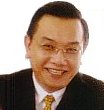
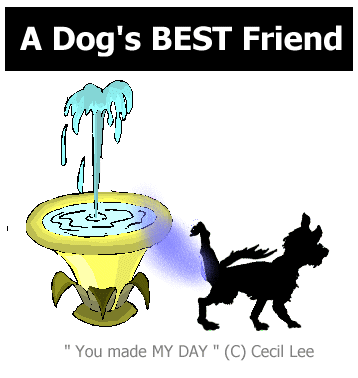
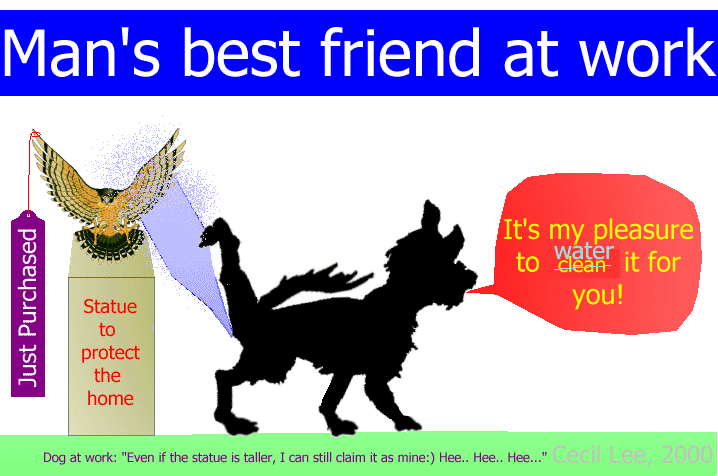
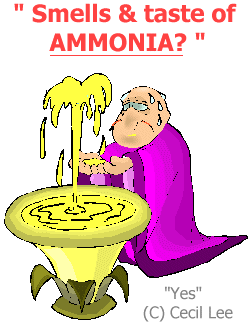
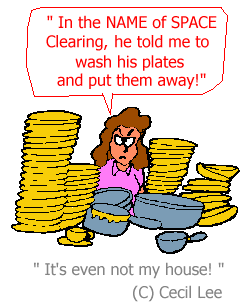


.gif.17f1191888ec0af1c1b0423a6053ab52.gif)

